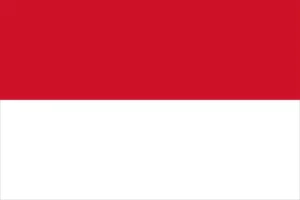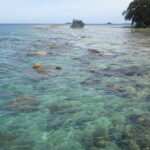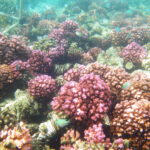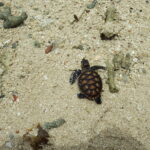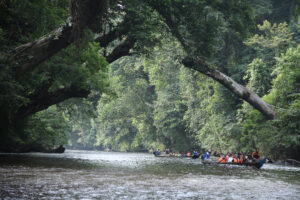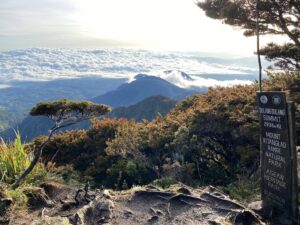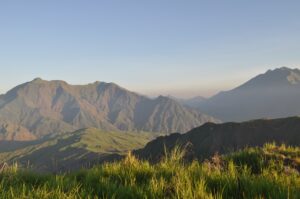Unique Flora: The vegetation structure in KSNP is dominated by coastal vegetation such as coconut palm (Cocos nucifera), pandan (Pandanus sp.), screwpine (Pandanus tectorius), cemara laut or Australian sea tree (Casuarina equisetifolia), cangkudu or noni (Morinda citrifolia), butun or sea poison tree (Barringtonia asiatica), breadfruit (Artocarpus altilis), ketapang or Indian/sea almond tree (Terminalia catappa), kecundang (Cerbera odollam), and sentigi or pemphis (Pemphis acidula). KSNP is the habitat of 15 true mangroves including Avicennia marina, Bruguiera gymnorrhiza, Bruguiera cylindrica, Ceriops tagal, Rhizophora apiculata, Sonneratia alba, Sonneratia caseolaris, Lumnitzera racemosa, Xylocarpus granatum, Xylocarpus molluccensis, Xylocarpus rumphii, Aegiceras corniculatum, Pemphis acidulata, and Excoecaria agallocha, with Rhizophora stylosa as the dominant species.
Eight seagrass species have been identified in the national park, specifically Thalassia hemprichi, Halodule uninervis, Cymodocea rotundata, Syringodium isoetifolium, Halophila ovalis, Cymodocea serrulata, Halophila minor, and Enhalus acoroides.
Unique Fauna: Small islands in the park are surrounded by fringing reefs at depths of 1–20 metres. A total of 134 corals belonging to 68 genus and sub-genus have been identified in the park, including hard and massive corrals such as Monstastrea and Labophyllia, table corrals, sea fans (Gorgonians), leaf corals, mushroom corals, and soft corals. Hard corals are dominated by the families Acroporidae, Portidae, Faviidae, Fungidae, and Agaricidae. Other species are akar bahar or black coral (Antiphates sp.) Helioporidae sp., Scleractinia sp., and Tubiporidae sp.
Various ornamental fish species can be found in the national park including those from the families Chaetodontidae, Apogonidae, and Pomancanthidae. Economically important fish species have also been recorded, such as baronang (Siganus sp.), tenggiri (Scomberom sp), ekor kuning (Caesio spp), kerapu (Epinephelus sp) and tongkol (Eutynus sp). Other significant species include the whale shark (Rhincodon typus), giant Clam (Tridacna gigas), fluted giant clam/scaly clam (T. squamosa), and southern giant clam (T. derasa). Three species of dolphins have been identified in the park, including the common bottlenose dolphin (Tursiops truncatus), short beaked common dolphin (Delphinus delphis), and spinner dolphin (Stennela longirostris). Other marine species include seahorse, starfish, crinoid, sea cucumber, and sea urchin, and crustaceans such as crab, portunidae, and crayfish.
KSNP is also noted as a nesting site for the hawksbill and green sea turtle. Sea turtle nesting sites include the Pramuka, Penjaliran Timur, Gosong rengat, Karya, Yu islan, and Semak Daun islands. KSNP has established and developed conservation facilities such as a hatchery center, ranching/enlargement center, and reintroduction site on Pramuka and Kelapa Dua islands.
Three species of eagles have been monitored in KSNP, such as the brahminy kite (Haliastur indus), white-bellied sea eagle (Halaeetus leucogaster), and osprey (Pandion haliaetus). These species are targets of a rehabilitation program in KSNP, primarily through an eagle translocation program in Kotok Island in collaboration program with the Jakarta Animal Aid Network.
Waterfowl species are also found in Seribu Island such as the little ringed plover (Charadrius dubius), lesser sand plover (Charadrius mongolus), whimbrel (Numenius phaeopus), great crested terns (Sterna bergii), Pacific reef heron (Egretta sacra), and striated heron (Butorides striata).
Habitat Types: Combination of terrestrial and shallow marine ecosystems (coral reef, mangrove and seagrass), with 78 small islands.






















